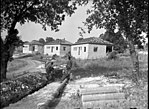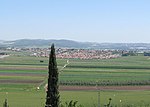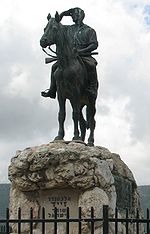Tel Shem
Tel Shem (Hebrew: תל שם), or Tell esh Shemmam (Arabic: تل الشمام), is an archaeological site located south of Kfar Yehoshua, in the Jezreel Valley, northern Israel. The Nahalal stream, a tributary of the Kishon River, flows east of the site. The site used to include a tell but it was flattened for agricultural use and it can no longer be seen on the surface. Fragments of building blocks and potsherds can be found scattered on the agricultural fields around the site and are usually exposed after the rain. Residents of Kfar Yehoshua have collected ancient artifacts from the site and put them as decorations in their homes. Those include complete vessels and figurines made of stone and pottery. The site was surveyed by Israeli archaeologist Avner Raban and a salvage excavation took place for the first time in 2013. The studies showed that although small, Tel Shem had human presence through almost every period from the Neolithic until the Byzantine rule, as well as during the Mamluk and Ottoman periods. A station of the old Jezreel Valley railway near Kfar Yehoshua was named after the site which was still visible in the beginning of the 20th century, before it was changed to "Kfar Yehoshua Station".
Excerpt from the Wikipedia article Tel Shem (License: CC BY-SA 3.0, Authors).Tel Shem
Emek Izrael Regional Council
Geographical coordinates (GPS) Address Nearby Places Show on map
Geographical coordinates (GPS)
| Latitude | Longitude |
|---|---|
| N 32.671472222222 ° | E 35.155055555556 ° |
Address
3657700 Emek Izrael Regional Council
North District, Israel
Open on Google Maps










